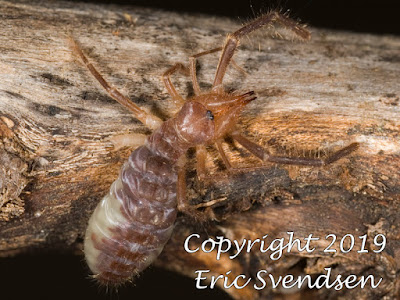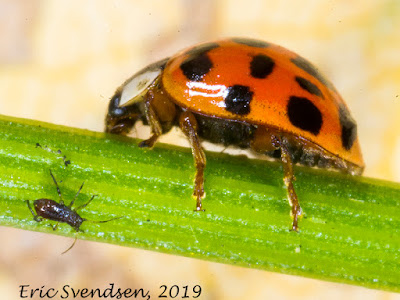Sun spiders - solifugids
 |
| Solifugid Sun Spider |
They are a type of arachnid; related to spiders but they belong to a different order. Other orders of arachnids include the mites and ticks, scorpions, and daddy long legs (phalangids). The order they belong to are the solifugids, also called sun spiders or sometimes camel spiders. They do not produce silk, they are not venomous, and have only a pair of eyes instead of the eight eyes that spiders have.
The first thing you would notice about a sun spider are the jaws; they are enormous. Massive, muscular, and solid structures designed for one purpose - to crush its prey to a pulp. All arachnids are liquid feeders. Spiders inject digestive juices to liquefy the prey's body tissues so they can drink up the resulting concoction. Ticks just attack flesh directly and drink the host's blood. Solifugids capture their prey and work it over by crushing the body juices out of it. Small camel spiders are content with other invertebrates, larger ones can actually take on tiny vertebrates such as mice or little birds.
Their soft bodies do not take the heat well and so they avoid bright, dry areas. They do have very good vision though and are capable of running down their prey. Sun spiders benefit from light to hunt, try to stay in cooler environments, and will seek dark areas for protection. It turns out that buildings are the perfect cover for these little beasts. I found the one above hunting a prospective meal on the floor of a men's room at a park for camping. My son, who was 15 at the time, wasn't sure going into the washroom was such a good idea after that.
Fortunately sun spiders are not harmful to humans. Fearless hunters, they facilitate pest management and are helpful in keeping unwanted things from crawling about their range. They do have a nasty bite, but you would have to annoy one quite a bit to find that out. Mostly they just want to be left alone to do what they do best - crush the life out of their little victims. Gross (but amazing).



Comments
Post a Comment